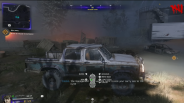The Beagle 2 spacecraft long sitting inert on the surface of Mars has been seen utilizing a new imaging technique. The photograph of the lander was part of the most detailed photographs ever taken of Mars by an observatory in space.
Super-Resolution Restoration (SRR) combines multiple images of the same spot, in a effort to eliminate fuzziness and smudging. The result was a composite photograph showing Mars with five times the detail of traditional methods.
Beagle 2, managed by researchers from the United Kingdom (UK), was part of the 2003 Mars Express Mission, conducted by the European Space Agency (ESA). The vehicle is named in honor of the HMS Beagle, the sailing ship which carried famed naturalist Charles Darwin on his life-changing trip around the globe.
The Mars lander was set to contact controllers on Earth after landing on the Red Planet on Christmas Day 2003. However, that call never came, and mission planners assumed the vehicle was lost on the alien surface. However, the failed lander was discovered, sitting on the surface of Mars, late in 2014.
Investigators studying data from the images of the craft now believe the Beagle 2 lander safely touched down on the surface of Mars. The current theory suggests solar panels on the craft may have failed, preventing the vehicle from contacting controllers. The lander is only just over 6 feet (72 inches) in length, making it difficult, at best, to view the vehicle from orbit.
"Given the size of Beagle 2, even with super-resolution images you are not likely to see more than a series of blobs because it is so small. What it does show is that it is on the surface and it is at least partially deployed," said Mark Sims of the University of Leicester and former mission manager for Beagle 2.
The newest images of the Beagle 2 lander support the idea that the lander only failed at some point after landing.
The new imaging technique could be utilized to record fine details on the surface of the Red Planet. This method could come in useful, as researchers study the world, preparing to send the first humans to the planet sometime in the 2030s.
Utilizing traditional photographic techniques allows a resolution of about 10 inches per pixel - large enough to barely show a basketball. However, SRR improves that ability to 2 inches - fine enough to see a baseball.
ⓒ 2025 TECHTIMES.com All rights reserved. Do not reproduce without permission.




